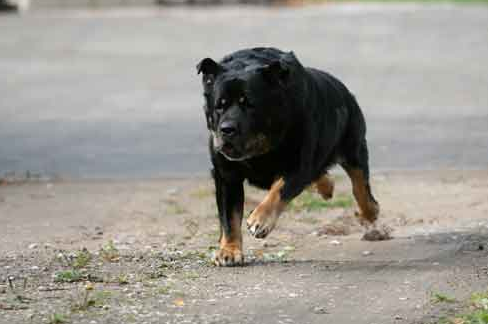While this article will address prey aggression as a type of dog aggression, in training and behavior circles, this isn’t always a generally accepted form of ‘true’ aggression. The reason why is because prey aggression goes to the heart of the canine in his true form as a hunter. Prey aggression is almost always directed at smaller animals than the dog that could be considered a prey animal to him.
Prey aggression is more of an issue for the owner of a dog that exhibits it. There are breeds that are more likely to demonstrate it based on the origin and purpose of the breed. Any breed that originated to hunt or kill something is more likely to have prey aggression issues. Any breed bred for solely companion purposes (like many very tiny breeds) is less likely to have an issue.
The majority of small terriers were bred to be rat or vermin killers, and the impulse to chase and immediately kill a small, moving object is very strong. Many of these terriers can’t be trusted around small pocket animals or even cats. Other, larger breeds have a strong impulse as well. In fact, working dogs (police and military) often have a very intense prey drive. This is highly desirable in these dogs for their work, but the prey drive is expressed through toys instead of killing small prey.
Many owners don’t realize the reason that toys are so popular for dogs. Toys, particularly the fuzzy, squeaky, stuffed toys, are made to mimic the sound of prey. The squeakers are high pitched, the item itself is squeezable, and it can be ripped apart. This is why you will see a dog repeatedly squeak the toy, shake it furiously, and often eventually rip it apart. With the toy the dog is fulfilling the prey/kill sequence.
When does prey aggression become a problem?
There are two times when prey aggression is a real problem.
The first situation that poses a real issue is when a dog has been mismatched to the home it is living within. This can happen when a dog is put in a situation with a lot of small animals that move quickly such as a terrier in a home with a lot of hamsters, small birds, etc. It can also happen with a breed such as a Belgian Malinois that might end up in a farm setting with free roaming chickens. If the situation is not monitored and closely managed while the dog is a young puppy, it is likely that the outcome could be poor for the perceived prey animal.
It is important to note that generally once a dog has killed a small animal, it is likely to do it again when put in a similar situation. So, once a dog has killed a chicken on the farm, he will probably enjoy doing it as he now knows how to do so.
The second situation where prey aggression is a very serious problem is when the prey aggression is directed at humans. While this is rare, it does occur. It is almost always directed at babies or young children.
Prey aggression towards people looks different than fear aggression or territorial aggression or any of the other kinds. Prey aggression is silent. The dog watches intensely the prey object. There is an excitement in his eyes when the prey object moves, makes sounds, and the more erratic the movement or sounds, the more exciting it is. Unfortunately, for the rare dog that will view children this way, children do the very things that cause the excitement. They run, move erratically, and scream and squeal.
Dogs will watch and stalk prey objects before they attack, normally silent. Once they grab, they will make bites towards the face and neck and attempt to shake, if the prey object is small enough. In the case of babies and children under a year, this is exactly what can happen. Children that are toddlers or young children will likely be bitten around the face and neck.
This is why it is imperative that children not be left unattended with dogs, even if it is the family dog. There are too many tragic cases where dogs severely injured and/or killed the child. Here are just a few examples:
http://www.foxnews.com/story/0,2933,505161,00.html
http://www.newson6.com/story/8746561/puppy-kills-baby-boy?redirected=true
http://www.wistv.com/story/15365963/baby-dies-in-dog-attack
http://www.oregonlive.com/news/index.ssf/2011/07/family_gathering_in_nehalem_en.html
Unfortunately, these are only a few stories. A few minutes and a search engine will show you these stories occur far too frequently. Most occasions with very small children involve a dog that is left unattended with them, and this can be a recipe for disaster.
Further analysis in cases like these is necessary to determine if the aggression is prey related or is another form, but in many cases it is at least partly triggered by the movement and sounds of the child.
Final note about predatory dog behavior
Most of these cases can be avoided in the first place. It starts with not allowing children to be alone with the dog. There are others steps that can be taken, and it is always advised to prepare the dog for the arrival of a baby. Many dog trainers offer private or group consultations to help dog owners prepare for the baby. This way the first exposure to a screaming and crying baby isn’t your real baby, and the chance that your dog will think of it as a foreign prey object is less.

